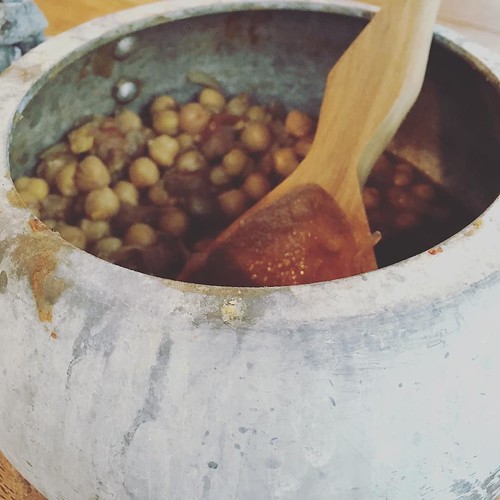Artemia franciscana mitochondria in RIPA (radioimmunoassay) buffer ended up thawed and centrifuged at 16,000 g for 10 min. The pellet was solubilized in 5 M urea, two M  thiourea, forty mM DTT and .1% SDS, and equally the pellet and the supernatant were cleaned up using the GE Health care 2-D Thoroughly clean-Up Package for each the manufacturer’s directions (GE Health care Bio-Sciences Corp., Piscataway NJ). Right after the thoroughly clean up, the pellets have been extracted with 100 mM ammonium bicarbonate, pH 7.eight and sonicated for ten min in a bath sonicator. Right after centrifugation, the extraction and sonication methods have been repeated on pellets nonetheless remaining. Supernatants ended up mixed and the protein focus was localization downloaded from the Broad Institute (http://www. broadinstitute.org/pubs/MitoCarta/index.html), on July 27, 2012. At the time of the look for this Mouse MitoCarta protein databases contained one,173 entries. Furthermore, the tandem mass spectra ended up searched from Crustacea proteins downloaded from NCBI on July twenty five, 2012 and appended with common contaminant proteins (eg., human keratins, trypsin, and so on). At the time of the research this personalized protein databases contained 108,788 entries. The results have been also validated utilizing the look for engine X!Tandem [sixty], and exhibited with Scaffold v 3.6.1 (Proteome Computer software Inc., Portland OR), a system that depends on different research engine final results (i.e: Sequest, X!Tandem, MASCOT) and which makes use of Bayesian data to reliably determine much more spectra [sixty one].
thiourea, forty mM DTT and .1% SDS, and equally the pellet and the supernatant were cleaned up using the GE Health care 2-D Thoroughly clean-Up Package for each the manufacturer’s directions (GE Health care Bio-Sciences Corp., Piscataway NJ). Right after the thoroughly clean up, the pellets have been extracted with 100 mM ammonium bicarbonate, pH 7.eight and sonicated for ten min in a bath sonicator. Right after centrifugation, the extraction and sonication methods have been repeated on pellets nonetheless remaining. Supernatants ended up mixed and the protein focus was localization downloaded from the Broad Institute (http://www. broadinstitute.org/pubs/MitoCarta/index.html), on July 27, 2012. At the time of the look for this Mouse MitoCarta protein databases contained one,173 entries. Furthermore, the tandem mass spectra ended up searched from Crustacea proteins downloaded from NCBI on July twenty five, 2012 and appended with common contaminant proteins (eg., human keratins, trypsin, and so on). At the time of the research this personalized protein databases contained 108,788 entries. The results have been also validated utilizing the look for engine X!Tandem [sixty], and exhibited with Scaffold v 3.6.1 (Proteome Computer software Inc., Portland OR), a system that depends on different research engine final results (i.e: Sequest, X!Tandem, MASCOT) and which makes use of Bayesian data to reliably determine much more spectra [sixty one].
SDS was extra to the lysate at a ultimate concentration of .one% and the lysate was sonicated for five sec using a probe sonicator. Proteins were precipitated with acetone. The pellet was extracted with eight M urea/one M guanadine HCl, sonicated as explained previously mentioned, and subjected to a spherical of freeze/thawing. Soon after centrifugation the supernatant was saved and the pellet was extracted with 8 M urea then centrifuged and the supernatant was taken out and saved. The blended supernatants had been assayed for protein concentration employing the Pierce 660 nm reagent as per the manufacturer’s directions (Pierce, Rockford IL). The pellets from the processing methods described C.I. 19140 earlier mentioned had been dissolved in Laemmli sample buffer, blended, and assayed for protein focus as explained earlier. A single mg parts of the supernatant portion had been possibly delipidated ([62] or cleaned up utilizing the GE Healthcare 2nd Clear-Up Package as per the manufacturer’s instructions (GE Healthcare, Piscataway NJ). The samples ended up fractionated by SDS-Web page 10 g every of the delipidated sample, the package-processed sample, and the pellets was loaded on a 15% acrylamide Criterion gel (BioRad, Hercules, CA), and following electrophoresis 10591873the gel was stained with BioSafe Coomassie Blue (BioRad, Hercules CA).
of solvent B for ten min and lastly a return to 5% in one moment and one more ten moment maintain of five% solvent B. All movement costs have been four hundred nl/min. Solvent A consisted of h2o and .one% formic acid. Replicate operates had been also executed utilizing a shorter 125 minute RP gradient (five% solvent B hold for 10 min, fifty% gradient of solvent B over 65 min, adopted by a 205% gradient of solvent B in excess of twenty five min, 35% solvent B maintain for 9 min, 355% gradient of solvent B more than five min, and last but not least by a ninety five% solvent B keep for yet another five minutes). Data dependent scanning was performed by the Xcalibur v two.one. software [56] making use of a study mass scan at 60,000 resolution in the Orbitrap analyzer scanning mass/cost (m/z) 400600, adopted by collision-induced dissociation (CID) tandem mass spectrometry (MS/MS) of the fourteen most powerful ions in the linear ion trap analyzer.
